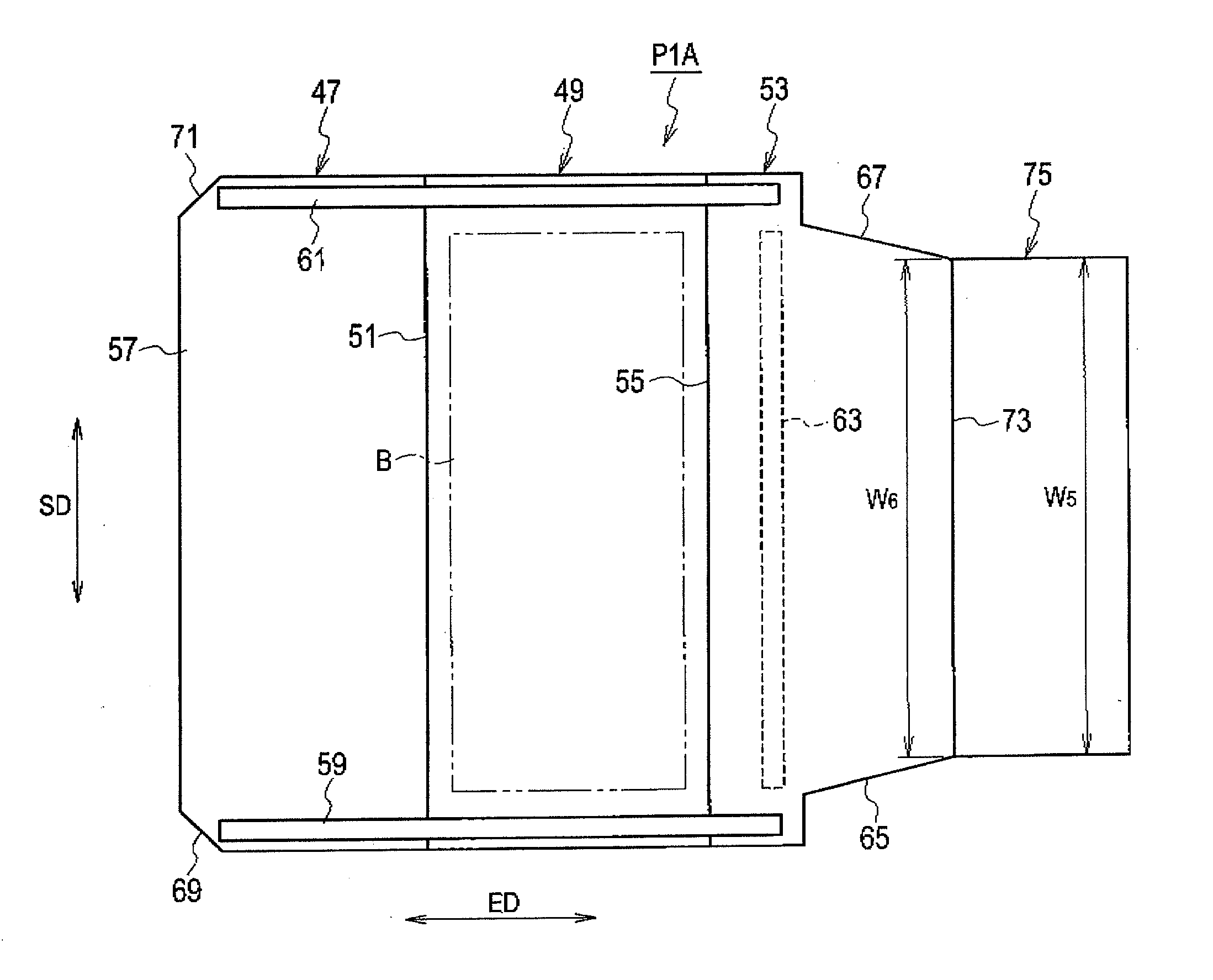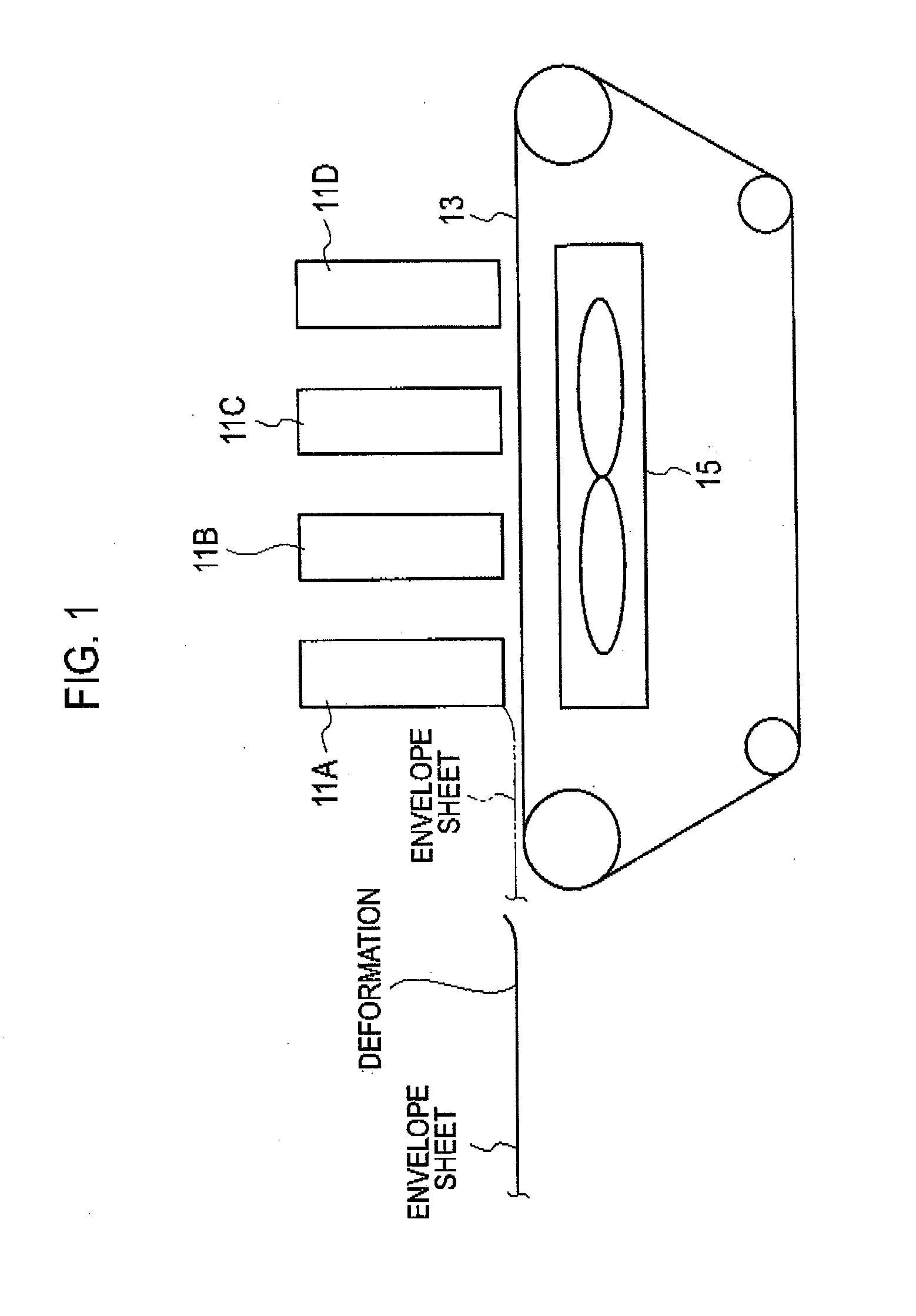Envelope sheet
a technology of envelope sheets and envelopes, applied in envelopes, packaging, flexible containers, etc., can solve the problems of paper jam, paper jam, and inability to correct the periphery deformation of the envelope sheet toward the endless belt, so as to reduce the rigidity of the third component sheet, the occurrence of paper jam can be sufficiently suppressed, and the effect of easy correction
- Summary
- Abstract
- Description
- Claims
- Application Information
AI Technical Summary
Benefits of technology
Problems solved by technology
Method used
Image
Examples
first embodiment
[0044]An envelope sheet according to the first embodiment of the present invention will be described, referring to FIGS. 2 to 5.
[0045]As shown in FIGS. 2 and 3A to 3C, the envelope sheet P1 is used when manufacturing the envelope M with the content B enclosed therein by the automatic envelope manufacturing system 1 described above (see FIG. 5). The envelope sheet P1 has a first rectangular component sheet (first component sheet) 47. To the first component sheet 47, a second rectangular component sheet (second component sheet) 49 is consecutively connected along the envelope unfolding direction (sheet long side direction) ED via the first folding line 51. To the second component sheet 49, a third rectangular component sheet (third component sheet) 53 is consecutively connected along the envelope unfolding direction ED via the second folding line 55. In other words, the three component sheets 47, 49 and 53 are consecutively connected along the envelope unfolding direction ED via the t...
second embodiment
[0055]An envelope sheet according to the second embodiment of the present invention will be described, referring to FIGS. 7, 8A, 86 and 8C.
[0056]As shown in FIGS. 7 and 8A to 8C, an envelope sheet P1A is used when manufacturing an envelope with the content B enclosed therein by the automatic envelope manufacturing system 1 described above (see FIG. 5). The envelope sheet P1A has a configuration similar to that of the envelope sheet P1 according to the first embodiment of the present invention (see FIG. 1) except for the following points. Note that, for the plurality of components in the envelope sheet P1A, those corresponding to the components in the envelope sheet P1 are provided with identical reference numerals.
[0057]The envelope sheet P1A according to the second embodiment of the present invention has, in addition to the first component sheet 47, the second component sheet 49, and the third component sheet 53, a fourth rectangular component sheet 75 consecutively connected to th...
PUM
 Login to View More
Login to View More Abstract
Description
Claims
Application Information
 Login to View More
Login to View More - R&D
- Intellectual Property
- Life Sciences
- Materials
- Tech Scout
- Unparalleled Data Quality
- Higher Quality Content
- 60% Fewer Hallucinations
Browse by: Latest US Patents, China's latest patents, Technical Efficacy Thesaurus, Application Domain, Technology Topic, Popular Technical Reports.
© 2025 PatSnap. All rights reserved.Legal|Privacy policy|Modern Slavery Act Transparency Statement|Sitemap|About US| Contact US: help@patsnap.com



